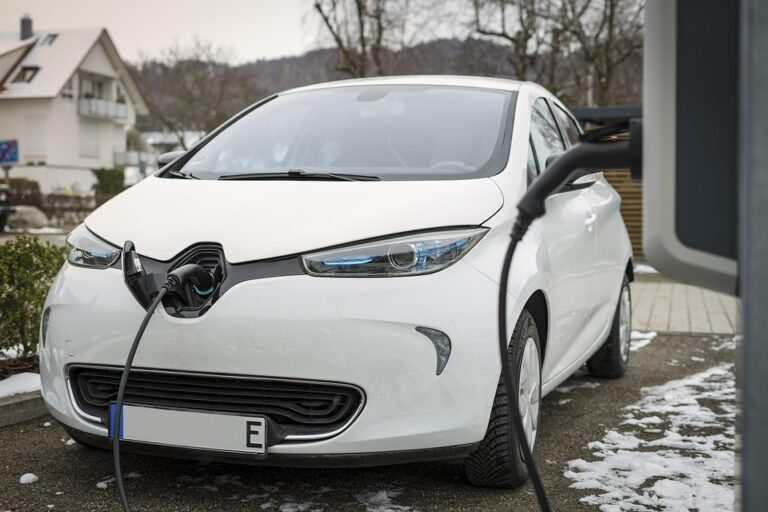Electric Dreams: The Rise of Sustainable Mobility Solutions
Introduction: Embracing the Future of Mobility
The landscape of transportation is rapidly changing as societies move toward embracing sustainable practices. The concept of future mobility isn’t just a trendy term; it’s a commitment to create systems that prioritize environmental integrity, convenience, and innovation. As we delve into the rise of sustainable mobility solutions, it’s essential to explore key developments, trends, and the implications for global transportation networks.
Understanding Sustainable Mobility
Sustainable mobility refers to methods of transporting people and goods that minimize environmental impact while increasing accessibility and efficiency. This paradigm shift is primarily fueled by growing concerns over climate change, urban congestion, and the desire for cleaner air.
Key Drivers of Change
- Technological Innovation: From electric vehicles (EVs) to smart public transit systems, technology poses a significant driving force behind modernizing transportation.
- Policy Frameworks: Governments worldwide are enacting laws and incentives to accelerate the adoption of clean technologies, shaping urban planning to favor sustainability.
- Consumer Demand: Today’s consumers are increasingly favoring services that are energy-efficient and environmentally friendly.
The Role of Electric Vehicles
Statistics at a Glance
Current statistics show that electric vehicle sales are on the rise. According to a recent report by the International Energy Agency (IEA), global sales of electric cars reached 6.6 million units in 2021, representing a 108% increase from the previous year. This trend highlights the significant consumer interest in adopting future mobility technologies, signaling a shift in public perception regarding electric cars.
Real-World Example: Tesla’s Game-Changer
Tesla Inc. has positioned itself as a leader in the electric vehicle market. Their commitment to sustainable mobility has not only changed perceptions but also established electric cars as mainstream. Tesla’s innovative battery technology and extensive supercharger network have made owning an EV convenient and desirable, supporting the broader transition to sustainable transport solutions.
Public Transport and Shared Mobility
Transforming Urban Spaces
Public transport remains crucial in achieving sustainable mobility. Cities are redesigning their transit systems, emphasizing electric buses, trams, and rail systems. For instance, cities like Amsterdam and Guangzhou are investing heavily in electric buses, aiming to convert their entire fleets.
- Impact on Pollution: A study conducted by the World Resources Institute (WRI) shows that public transit systems can reduce per-passenger carbon emissions by up to 45% compared to private car use.
- Cost-efficiency: Increased investment in electric public transit is also proving economically beneficial, as it reduces operational costs associated with fossil fuels.
The Concept of Shared Mobility
Shared mobility initiatives, such as ride-sharing and bike-sharing programs, contribute significantly to the future mobility landscape. By reducing the number of vehicles on the road, these services help decrease traffic congestion and emissions.
For example, companies like Zipcar and Lime have democratized access to transportation, ensuring more people can benefit from efficient, sustainable methods of mobility without the need for individual car ownership.
Innovations in Technology
Advances in Fuels and Infrastructure
Innovations in fuel technology, such as hydrogen fuel cells and biofuels, are providing alternative energy sources that complement electric vehicles. Moreover, developing infrastructure for charging stations significantly supports the adoption of future mobility solutions.
- Smart Infrastructure: Cities are adopting smart traffic management systems to optimize flow and enhance public transport efficiency. These systems gather real-time data to reduce congestion and improve safety.
Autonomous Vehicles
As we look further into the future mobility landscape, autonomous vehicles are positioning themselves as a pivotal component of sustainable transportation. These self-driving cars will likely be electric, further reducing emissions and improving road safety.
The Impact on Society and the Environment
The awakening to sustainable mobility has immense social and environmental ramifications. By prioritizing sustainability in transportation, cities can improve public health, reduce greenhouse gas emissions, and create more inclusive communities. The transition to future mobility is not just an environmental imperative but a societal transformation that enhances quality of life.
Conclusion: A Sustainable Future Ahead
As we stand on the cusp of a transportation revolution, the rise of sustainable mobility solutions is about more than just technology; it’s rooted in a collective commitment to fostering a healthier planet for future generations.
Embracing the future mobility paradigm is not merely a choice but a responsibility shared among policymakers, businesses, and consumers alike. For further insights and developments in this dynamic field, explore more on buzzo.live:
- The Impact of Electric Vehicles on Urban Living
- How Governments Can Support Electric Mobility
- Public Transport: The Future of Urban Mobility
For additional information on current sustainability trends in transportation, consider visiting external sources like International Energy Agency (IEA) and World Resources Institute (WRI).
Image Suggestions:
-
Image of an electric vehicle charging station
- Alt Text: Electric vehicle charging station illustrates future mobility.
- Image showcasing a smart public transport system
- Alt Text: Smart public transport system in urban environment denotes future mobility solutions.
Let’s move forward together into the era of electric dreams, where sustainable mobility solutions redefine our lives and our planet’s future.


